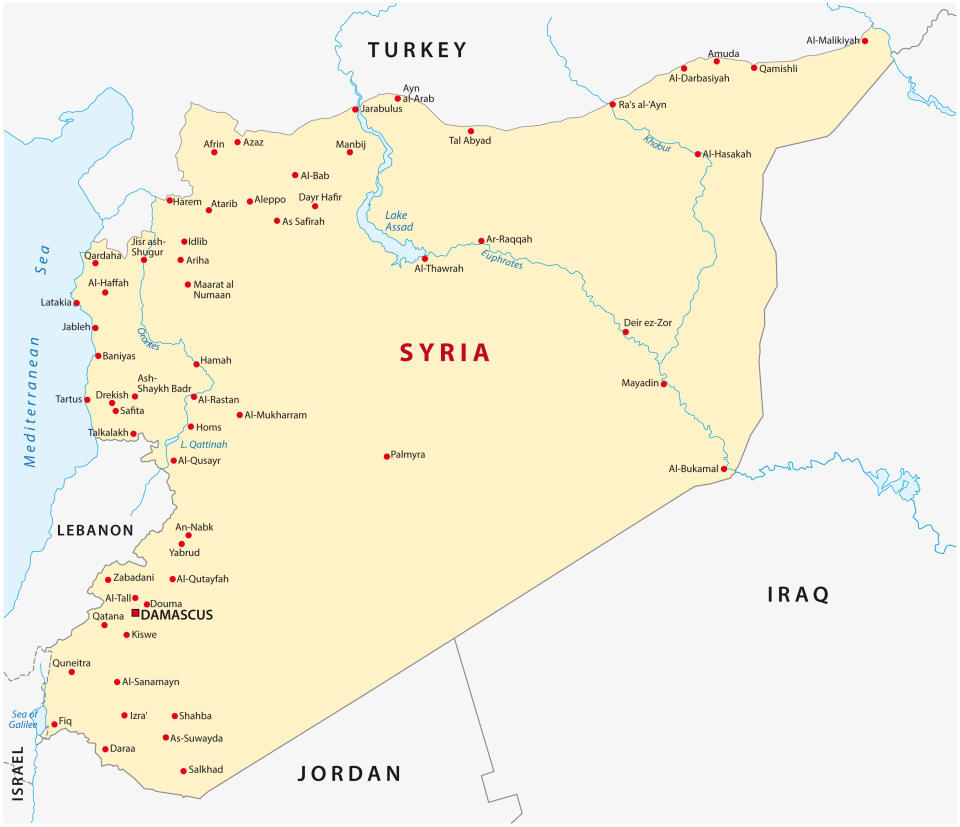Cabinet minister Pat McFadden has said there are “no plans” for the government to consider whether Shamima Begum could come come back to the UK following the fall of Syrian president Bashar al-Assad.
Begum is among tens of thousands of people being held in northern Syrian detention camps Roj and Al Hol, which house former Isis families and those displaced by conflict.
Following the surprise fall of the Assad regime this weekend after five decades of dynastic rule, questions over the future of those stuck in the camps have once again been raised.
Asked whether there could be a situation where the government would look again at whether Begum could return, Chancellor of the Duchy of Lancaster McFadden told Sky News: “No plans to do that right now.”
Yahoo News explains what the events in Syria could mean for its refugee camps and the UK.
Where is Shamima Begum?
Begum is being held in the Roj camp, which is located in the north-eastern tip of Syria. It is the smaller of two detention camps that together hold close to 50,000 people.
Around 2,500 people are held in the Roj camp, where freedom of movement is limited to the extent that aid charities have described the refugee bases as “detainment camps”.
According to a report from Save the Children: “Al Hol and Roj camps are no place for children to grow up. The camps remain overcrowded, with services critically overstretched and shelter inadequate.
“There are high levels of tension and violence. Children face early and forced marriage, domestic violence and other forms of mental or psychological abuse.”
Who else is in Al Roj?
The US-backed, Kurdish-run Syrian Democratic Forces (SDF) run the Roj camp, which houses women and children. There have been numerous reports that boys have been removed from the camp once they reach age 11 or 12 and taken to a separate facility amid security concerns. The move has been widely criticised by aid agencies.
As well as holding the families of former Isis members, including displaced foreign nationals, the Al Hol and Roj camps are also home to those who fled Isis-controlled areas during the height of the terror group’s territorial control – as such, there is widespread ideological conflict inside the facilities.
What could happen to detained Isis fighters in Syria?
The fall of Assad – who came to power in 2000, following 29 years of rule by his father Hafez al-Assad – brings an end to decades of repressive rule.
But the country – and by extension the Isis fighters detained in the country – face an uncertain future.
Islamist militant group Hayat Tahrir al-Sham (HTS), which originated from a former wing of al-Qaeda, led the rebels in toppling Assad – but it is not clear how they would engage with other nations (particularly the US, which regards them as a terror group).
It is similarly unclear what the group has planned for the county – and whether the fragile rebel coalition will hold up in the wake of Assad’s ousting.
Journalist, writer and academic Azadeh Moaveni, who has spent two decades covering the Middle East, told Yahoo News that people held in the camps could be freed if there are clashes between different groups.
“The anti-ISIS coalition, and mainly the US and UK, have invested heavily in securing the camps, so I don’t see a major risk of a prison break-out, for example,” she said.
“The danger could arise from the SDF clashing with HTS or other Turkey-affiliated groups, and the group using their control of the camps — and the threat of essentially opening their doors — to stave off any attempt to diminish or shut down their control of the north-east.
“If Syria essentially becomes partitioned, it could well be that the SDF are permitted to keep their control of that area, which would likely suit the US, and indeed Iran, and Israel. There will be a peculiar re-alignment of interests with the SDF now that HTS has essentially come to power, even if that control is chaotic and de facto.”
Could this increase security threat to the UK?
Concerns about the threat level further afield have already been raised by the US and UK, with the former head of MI6 Sir Alex Younger warning that there could be a “serious spike” in the threat posed by Isis.
Sir Alex Younger told the BBCV Radio 4 Today programme: “This is very much a Syrian future for Syrians to decide and we should, of course, support anything that moves Syria towards a more positive state.
“But we also have some hard interests and the primary one of those is the existence of a very large number of Isis detainees left over from the destruction of the caliphate, currently contained by the Kurdish groups in the east.
“But if they go off the job you can expect a serious spike in the threat posed to Europe by Isis.”
Moaveni told Yahoo News that the largest security threat would be from fighters being released by the SDF, adding that much of this threat would likely be contained within the region.
“In terms of security risk, I don’t see major risks to the UK from break-outs or self-initiated ‘returns’ — the security services here know exactly who is in that camp and would apprehend them immediately upon entry into the UK,” she said.
“The bigger security risk would come from those fighters being released by the SDF and potentially regrouping with ISIS pockets in Syria, which again I think would pose a bigger threat to Syria and Iraq than the UK.”
EMEA Tribune is not involved in this news article, it is taken from our partners and or from the News Agencies. Copyright and Credit go to the News Agencies, email news@emeatribune.com Follow our WhatsApp verified Channel




